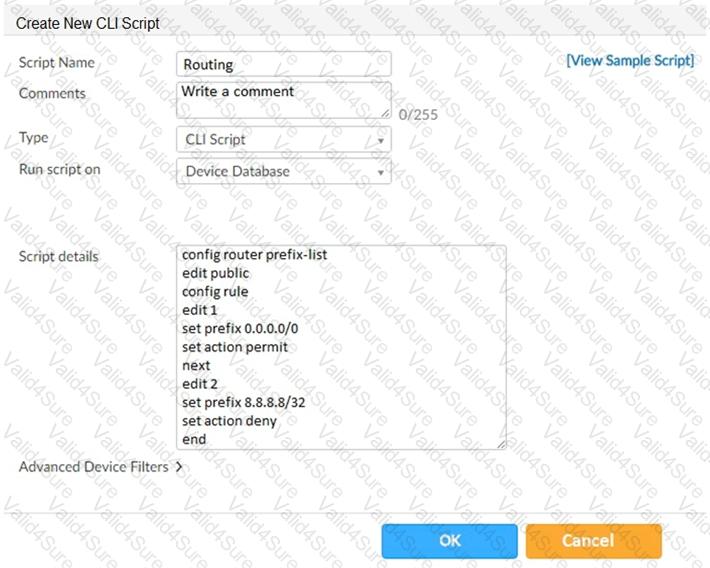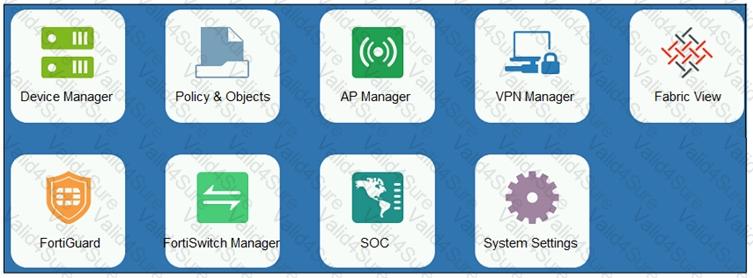NSE5_FMG-7.2 Exam Dumps - Fortinet NSE 5 - FortiManager 7.2
Question # 4
An administrator has enabled Service Access on FortiManager.
What is the purpose of Service Access on the FortiManager interface?
Question # 5
Refer to the exhibit.

Which two statements are true if the script is executed using the Device Database option? (Choose two.)
Question # 7
Refer to the exhibit.

An administrator logs into the FortiManager GUI and sees the panes shown in the exhibit.
Which two reasons can explain why the FortiAnalyzer feature panes do not appear? (Choose two.)
Question # 8
An administrator has assigned a global policy package to custom ADOM1. Then the administrator creates a new policy package, Fortinet, in the custom ADOM1.
Which statement about the global policy package assignment to the newly-created policy package Fortinet is true?